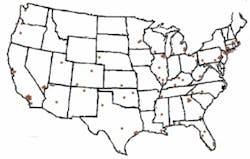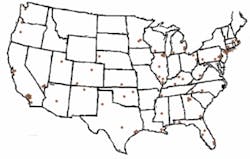Faces I remember
There’s nothing as heart wrenching as watching a tragedy unfold. Even if you’re not a victim, you are still affected by current events in your neighborhood.
In my case, the Branch Davidians barricaded themselves into their compound on a cold weekend in February 1993. I was on a campout with Webelos (that age group between Cub Scouts and Boy Scouts). It doesn’t really snow that much in Central Texas. What you get is sleet, and I encountered way too much of it on that weekend. The icy pellets striking me while standing over a campfire left me being an unhappy camper. I was glad to get out of the weather on Sunday and turn on the TV in the living room of my warm house in Waco, Texas. What I saw was not anything I’ll ever forget - people shooting each other in my town.
As is the case with most Americans, I never even knew the Branch Davidians were there. I was just as surprised as anyone, even though the cult’s compound turned out to be just a short drive away.
My next-door neighbor was the lead anchorman for the CBS affiliate in Waco. On a weekend after the fire consumed the compound that April, we stayed up all night, getting drunk and talking about the events that had overwhelmed Waco in 1993. We said hello to the dawn and stumbled off to our respective beds. That all-night drinking binge is noteworthy only because it was the last time I abused my aging body in that way.
Tragedies touch all of us. I look at magazine covers and wonder how people are.
I am 50 years old, which means I was born 13 years after Pearl Harbor. So the 9/11 attacks impacted me as much as they did someone 30 years my junior.
I look at covers and think about my brief interaction with the cover models. A dental hygienist will ask if he or she can pose for the cover. I’ll find out a little bit about them, primarily to see if there’s a “theme” that should be considered. I’ll arrange for photographers, and call models back to let them know who the photographer is. After an issue is published, I will again have a brief contact with the models to determine how many extra copies they need.
And that’s it. Usually, I never talk to them again.
But somebody will call me and say, “Do you know that article that had ...” or I’ll need to look up something for myself. So I’ll go find an old issue and glance at the cover (which, of course, has the issue’s date at the top).
After both 9/11 and this year’s disaster along the Gulf Coast, as well as the 2004 rampage of storms across Florida, I often found myself thinking, “I hope she’s all right.” In recent weeks, we have observed the Gulf Coast show signs of life again after being devastated by Katrina (although Rita slowed the recovery process). It sure is tough to not be concerned about our colleagues there.
Rebekah Anzalone, the December 2002 cover model, is the latest one, of course, to add to the list. I actually met Rebekah in person. I was at a dental convention, and an ad salesman tracked me down. “You’ve got to meet this hygienist. I think she would be great for a cover.” So I followed him over to Rebekah, and we were introduced. We talked about New Orleans, since my father’s wife is a native of the city. I remember Rebekah being very polite, and I remember her describing her involvement with the local component society for the ADHA there.
I hope she’s OK.
With this editorial, I include the photos of the cover models from the New York City area before 9/11 and the areas hit by hurricanes during the past two seasons. I have no idea how they’re doing with their lives. But, one, dental hygiene is a community, and, two, it’s a very compassionate community. Let’s keep each other in our thoughts.
Mark Hartley is the editor of RDH. He can be contacted at [email protected].










